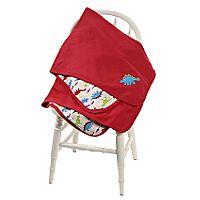There still is two more sessions for next thursday and the following thursda.
Here's what we learned:
The purpose of a time out:
A time out is the opportunity for a child to stop and regain control over him or her self. A time out is a chance for the child (and at times the adult) to cool off. A time out is also an opportunity for the parents to process the incident and teach more appropriate behaviors.
When do I give a time out?
When a child is not responding to the adult's directions and is engaging in inappropriate behaviors then the child is in need of a time out. A time out can be in the child's room or in an area where it is quiet and calming. This is a time for the child to focus on regaining control and settling down so that he or she can discuss the issue with the parent.
The time out starts once the child is quiet. If the child is kicking, banging, and yelling then the time out has not started. The parent can remind the child that his or her time starts when he or she is quiet.
How Long is a time Out?
Usually the time spent cooling off is equal to the child's age. For example, a ten year old child would be given a ten minute time out. A five year old child would be given a five minute time out. Remember- the timer starts when they're quiet.
It is important to remember that is it the adult who is in charge of the time out, not the child. The adult will determine when the cooling off period is over.
There are two parts to a time out. The most important part of the time out starts after the time out is over. Once the child has completed the cooling off time, the parent must spend time processing the time out with the child.
Note: If the child is not prepared to discuss the issue once the time is up (i.e. still is angry, or has a negative attitude) then they may require extra time. Let the child know that you will give them some more time to cool down, as they do not appear to be ready yet.
Processing the time out:
A time out is not complete (nor is it effective) until the talking and learning is done. Once the child has completed the required time quietly, and is ready to discuss the issue, the parent needs to meet with the child to discuss what happened.
There are four important questions that must be asked of the child/
Processing after the time-out.
- what you did
- why you did it
- why it's not okay
- what you should have done instead
- What did you do ?(Encourages the child to own the behavior)
- Why did you do it? (Helps the child to look at triggers to their behavior)
- Why is it not okay? (promotes an understanding of socially acceptable behaviors)
- What should you have done instead? (Teaches the child the appropriate behavioral alternative)
It is very important that the child answer these questions- not the parent. After all it is the child who needs to own the behavior- not the parent.
Once the parent has discussed the appropriate behavior, the child needs to demonstrate or role-play the new behavior. This is also the opportunity to let the child know what consequences will occur if they choose the problem behavior again (i.e. loss of a privilege). The child is free to resume activities once he or she verbally commits to follow through with the new appropriate behavior.






No comments:
Post a Comment